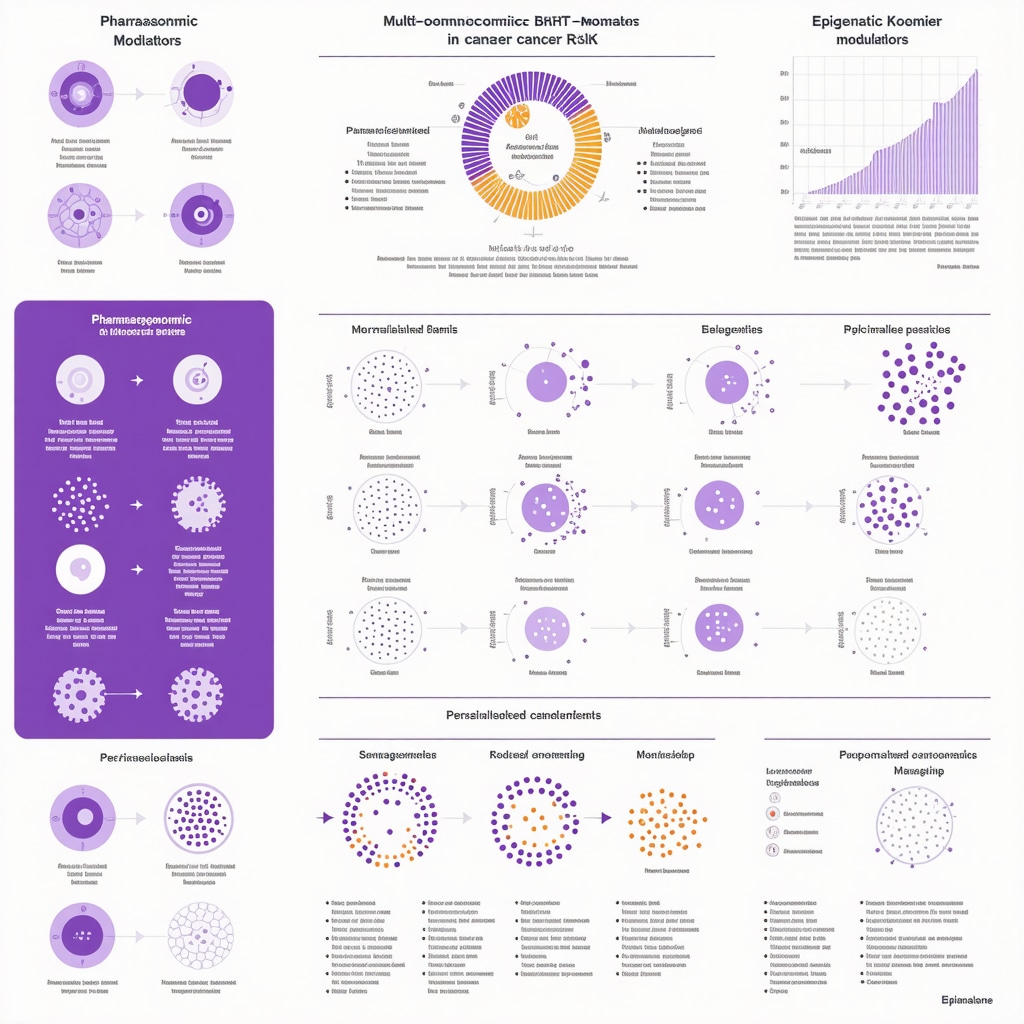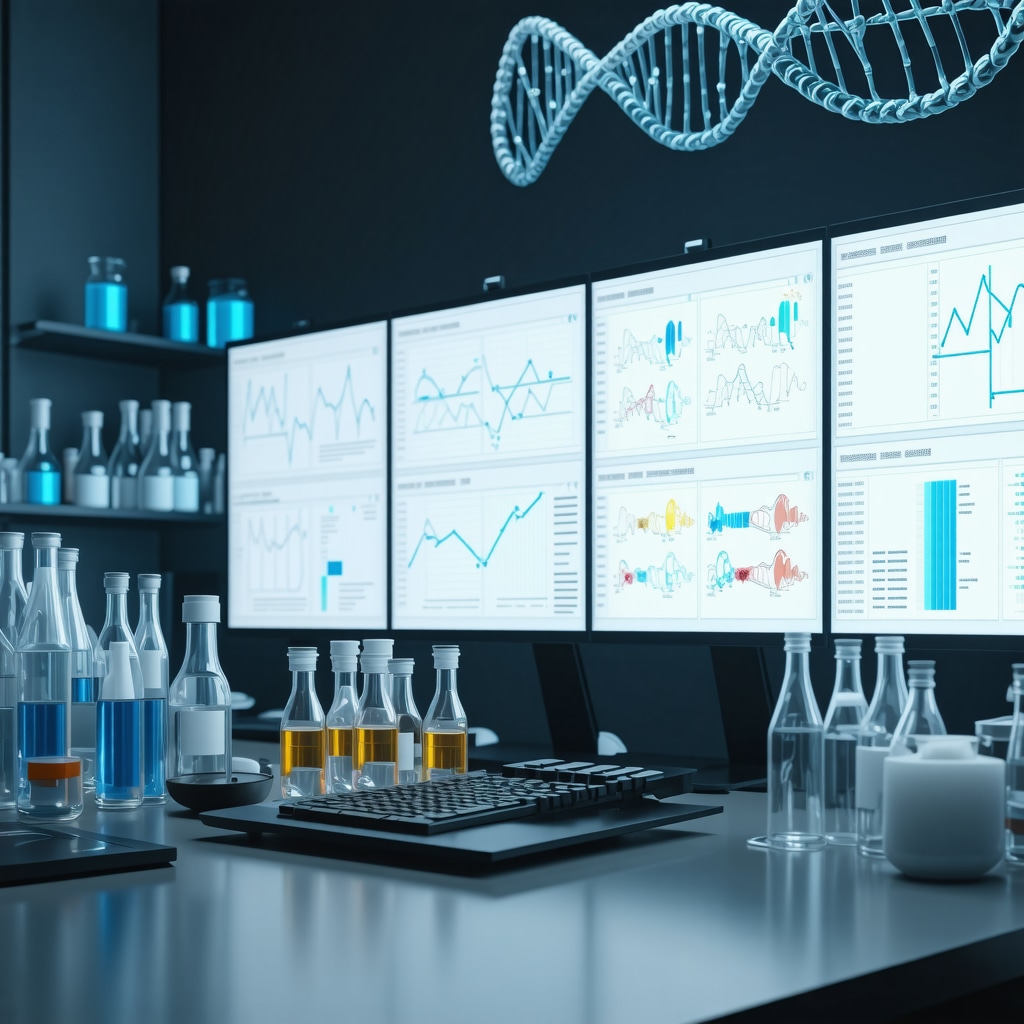Unveiling the Cancer Risk Myth Surrounding BHRT
Bioidentical Hormone Replacement Therapy (BHRT) has become a beacon of hope for many San Diego patients seeking relief from hormonal imbalances. Yet, an underlying concern shadows its rising popularity: Does BHRT increase cancer risk? This question demands a nuanced exploration beyond common fears to uncover truths grounded in science and clinical experience.
Decoding Hormonal Influence: How BHRT Interacts with Cancer Risk
BHRT uses hormones chemically identical to those naturally produced by the body, distinguishing it from synthetic hormone therapies. This subtle but important difference influences how these hormones interact with bodily tissues, including breast and endometrial cells. Clinical evidence suggests that the risk profile of BHRT may differ from conventional hormone replacement therapies, yet it is crucial to understand individual factors such as dosage, hormone types, and patient history.
What Does Research Say About BHRT and Cancer Risk?
Extensive studies, including analyses by the American Cancer Society, indicate that traditional hormone replacement therapy (HRT) involving synthetic hormones can increase breast cancer risk when used long-term. However, BHRT’s bioidentical hormones, tailored to individual hormonal needs, may present a different risk spectrum. Recent peer-reviewed research underscores the importance of personalized treatment protocols, which San Diego specialists emphasize to optimize safety and efficacy.
Real-Life San Diego Patient Experiences: Navigating Hormone Therapy Safely
Consider the case of Maria, a 52-year-old San Diego resident who experienced severe menopausal symptoms. Under expert guidance, she started a customized BHRT regimen that significantly improved her quality of life without adverse effects. This example highlights how personalized hormone optimization and monitoring can mitigate potential risks while maximizing benefits. Patients are encouraged to engage in thorough consultations and hormone testing to tailor therapies precisely.
Empowering San Diego Patients: Integrating BHRT with Holistic Lifestyle Choices
BHRT’s effectiveness and safety are enhanced when combined with healthful lifestyle strategies. Nutrition, exercise, and stress management, alongside careful hormone balancing, form a trifecta for wellness. San Diego patients can explore resources like integrative approaches to hormone health that emphasize natural hormone optimization and personalized care.
Understanding the Limits: Why Vigilant Monitoring is Key
While BHRT offers promising advantages, it is not without complexities. Continuous monitoring through hormone testing and clinical evaluations is essential to detect any early warning signs and adjust therapy accordingly. This proactive approach, practiced by leading San Diego clinics, supports long-term safety and addresses any evolving health concerns promptly.
If you’re considering BHRT and want to understand how it fits your unique health profile, contact our San Diego experts to start your personalized hormone optimization journey today. Your health deserves informed choices backed by expertise and care.
Personalizing BHRT: The Role of Genetic and Lifestyle Factors in Treatment Success
Understanding the patient’s unique genetic background and lifestyle is critical to tailoring BHRT effectively. Genetic predispositions can influence hormone metabolism and receptor sensitivity, impacting how bioidentical hormones interact within the body. For example, variations in the CYP450 enzyme system can affect estrogen metabolism pathways, potentially modifying cancer risk profiles. Integrating genetic testing with comprehensive lifestyle assessments enables San Diego clinicians to optimize dosing regimens and hormone combinations, achieving efficacy while minimizing adverse effects.
Exploring Advanced Monitoring Techniques for Enhanced Safety
Beyond standard hormone level testing, advanced monitoring methods such as metabolomic profiling and tissue-specific biomarker analysis provide deeper insights into how BHRT affects cellular environments. These techniques can detect subtle biochemical changes linked to hormone-driven proliferation, offering early warning signals for potential malignancies. San Diego’s leading hormone therapy centers increasingly incorporate these sophisticated diagnostics to refine therapy protocols and ensure patient safety over time.
Could Emerging Biomarkers Revolutionize BHRT Risk Assessment?
Experts are actively investigating novel biomarkers that could transform the way clinicians assess cancer risk during BHRT. For instance, circulating tumor DNA (ctDNA) and microRNA profiles are promising candidates for non-invasive monitoring of hormone-related oncogenic changes. If validated, these biomarkers could enable real-time risk stratification, allowing for dynamic adjustments in hormone therapy to preempt adverse outcomes. This cutting-edge research reflects the field’s commitment to precision medicine and patient-centric care.
Integrating BHRT with Nutritional and Herbal Support for Holistic Hormone Balance
Complementing BHRT with targeted nutritional strategies and herbal supplements can amplify hormone balance and overall well-being. Nutrient-dense foods rich in phytoestrogens, omega-3 fatty acids, and antioxidants support endocrine function and may mitigate inflammation associated with hormone fluctuations. San Diego patients seeking natural adjuncts can explore guides such as foods that balance hormones naturally and San Diego’s top herbs for hormone balance, which highlight evidence-based options to support therapy.
Addressing Patient Concerns: Dispelling Persistent Myths about BHRT and Cancer
Despite mounting evidence supporting BHRT’s safety under expert supervision, myths and misconceptions persist. Patients often worry about hormone therapy triggering cancer, sometimes fueled by outdated or generalized information. It is essential for healthcare providers to engage in transparent discussions, referencing authoritative sources like the American Cancer Society, to clarify risks and benefits. Empowering patients with accurate knowledge fosters informed decision-making and alleviates anxiety.
For those interested in exploring customized hormone therapies or learning more about hormone testing accuracy, consider reading our comprehensive guide on hormone balancing and testing. Join the conversation by sharing your experiences or questions in the comments below and help enrich our community’s understanding of BHRT’s potential and safety.
Genomic Precision: Leveraging Pharmacogenomics to Tailor BHRT Safely
Recent advances in pharmacogenomics have revolutionized how clinicians approach Bioidentical Hormone Replacement Therapy, particularly concerning cancer risk management. By decoding individual genetic variations—such as polymorphisms in estrogen receptor genes (ESR1/ESR2) or enzymes involved in steroid metabolism—San Diego specialists can predict hormone responsiveness and potential oncogenic pathways with unprecedented accuracy. This genomic insight enables bespoke hormone formulations and dosing schedules that align tightly with each patient’s molecular profile, thereby minimizing inadvertent stimulation of hormone-sensitive tissues.
For example, certain variants of the CYP1B1 gene are known to influence the ratio of estrogen metabolites that have proliferative versus protective effects on breast tissue. Identifying these variants through genetic testing allows clinicians to adjust BHRT to favor safer metabolic pathways, reducing carcinogenic risk factors linked to estrogen metabolism.
Advanced Biomarker Panels: Early Detection and Dynamic BHRT Adjustment
Integrating multi-omic biomarker panels—encompassing genomics, proteomics, and metabolomics—has emerged as a transformative strategy in monitoring BHRT’s long-term safety. By analyzing circulating tumor DNA (ctDNA), hormone receptor expression patterns, and metabolite signatures, clinicians gain a dynamic and sensitive window into tissue-level changes that may precede malignancy. This proactive surveillance framework supports timely therapeutic modifications before adverse events manifest clinically.
How Can Multi-Omic Biomarker Integration Enhance Personalized BHRT Safety?
Multi-omic data integration offers a holistic perspective on patient-specific hormone interactions and cancer risk signals. Combining these biomarkers with clinical parameters enables the construction of individualized risk models that evolve with treatment. In clinical practice, this approach facilitates real-time adjustments in hormone dosage or composition, optimizing safety without sacrificing symptom relief. A recent publication in Frontiers in Oncology highlights the potential of ctDNA as a minimally invasive biomarker for early detection of hormone-driven malignancies during hormone therapies.
Such sophisticated monitoring protocols underscore the paradigm shift from reactive to preemptive care in BHRT, particularly within specialized San Diego clinics dedicated to precision endocrinology.
Synergistic Strategies: Combining BHRT with Epigenetic Modulators for Cancer Risk Reduction
Emerging research suggests that epigenetic modulators—nutraceuticals or pharmacological agents influencing gene expression without altering DNA sequence—may synergize with BHRT to attenuate cancer risk. Compounds such as resveratrol, curcumin, and certain flavonoids have demonstrated the capacity to modulate estrogen receptor signaling pathways and reduce pro-inflammatory epigenetic marks associated with tumorigenesis.
Integrating these agents under clinical supervision offers a promising adjunctive strategy, especially for patients with high genetic or lifestyle-related risk factors. San Diego practitioners are pioneering protocols that combine BHRT with targeted epigenetic support, fostering a multi-layered protective environment while enhancing hormonal balance.
Understanding the complexity of these interactions demands a high level of clinical acumen, underscoring the necessity of personalized treatment plans tailored by experienced hormone specialists.
To delve deeper into personalized BHRT approaches and cutting-edge monitoring techniques, connect with our expert clinicians and explore how genomic and biomarker-guided therapies can redefine your hormone health journey.

Genomic Precision: Harnessing Pharmacogenomics to Revolutionize BHRT Safety
In the evolving landscape of Bioidentical Hormone Replacement Therapy, leveraging genomic data has become indispensable for mitigating cancer risk. San Diego clinicians now utilize pharmacogenomic profiling to decode polymorphisms in estrogen receptor genes (such as ESR1 and ESR2) and steroid-metabolizing enzymes, enabling unparalleled customization of hormone regimens. This molecular-level tailoring prevents inadvertent overstimulation of hormone-sensitive tissues, thereby refining therapeutic efficacy while safeguarding against oncogenic pathways.
Advanced Multi-Omic Biomarkers: Transforming Risk Surveillance in Hormone Therapy
Standard hormone level assays are increasingly complemented by integrative multi-omic biomarker panels encompassing genomics, proteomics, and metabolomics. This comprehensive approach allows for the detection of early biochemical perturbations indicative of malignant transformation. By monitoring circulating tumor DNA (ctDNA), hormone receptor expression profiles, and metabolite patterns, San Diego’s specialized hormone centers pioneer a shift towards preemptive intervention, ensuring dynamic BHRT adjustments are made before clinical symptoms arise.
How Can Multi-Omic Biomarker Integration Enhance Personalized BHRT Safety?
Multi-omic integration synthesizes complex biological data streams to create individualized risk models that evolve alongside treatment. This enables clinicians to fine-tune hormone dosages and compositions responsively, maximizing symptom relief without compromising safety. A seminal Frontiers in Oncology article underscores the promise of ctDNA as a minimally invasive biomarker for early detection of hormone-driven malignancies, marking a paradigm shift from reactive to precision-driven care.
Synergistic Epigenetic Modulation: A Novel Frontier in BHRT Cancer Risk Mitigation
Recent studies reveal that integrating epigenetic modulators such as resveratrol, curcumin, and specific flavonoids with BHRT can attenuate oncogenic risk by modulating estrogen receptor signaling and reducing pro-inflammatory epigenetic marks. San Diego practitioners are at the forefront of combining these agents under clinical supervision, crafting multi-layered strategies that bolster hormone balance and foster a protective cellular milieu, particularly for genetically predisposed patients.
This sophisticated interplay between hormonal and epigenetic therapies demands expert clinical navigation to optimize outcomes and minimize risks, emphasizing the necessity of personalized, evidence-based approaches.
Engage with San Diego’s Leading BHRT Experts: Elevate Your Hormone Health
For patients and practitioners eager to explore the convergence of genomics, multi-omic biomarkers, and epigenetic adjuncts in BHRT, San Diego offers unparalleled expertise. Connect with our specialized clinicians today to embark on a highly individualized hormone optimization journey that integrates cutting-edge science with compassionate care. Unlock the full potential of BHRT safely and effectively through precision medicine.

Frequently Asked Questions (FAQ)
What distinguishes Bioidentical Hormone Replacement Therapy (BHRT) from traditional hormone therapies regarding cancer risk?
BHRT utilizes hormones structurally identical to those naturally produced by the body, whereas traditional therapies often use synthetic hormones. This biochemical similarity allows BHRT to interact more physiologically with hormone receptors, potentially resulting in a different and often more favorable cancer risk profile. However, safety depends on individualized dosing, monitoring, and patient-specific factors.
How does genetic testing influence BHRT safety and effectiveness?
Genetic testing reveals polymorphisms affecting hormone metabolism and receptor sensitivity, such as variations in CYP450 enzymes or estrogen receptor genes (ESR1/ESR2). Understanding these genetic factors enables clinicians to customize hormone types, dosages, and delivery methods, thereby optimizing therapy and minimizing cancer risk associated with hormone-sensitive tissues.
Are there advanced monitoring techniques that can detect cancer risk early during BHRT?
Yes. Emerging multi-omic biomarker panels—including genomics, proteomics, and metabolomics—allow for early detection of biochemical changes indicative of malignancy. Monitoring circulating tumor DNA (ctDNA) and hormone receptor expression patterns provides a sensitive, minimally invasive approach to dynamically adjust BHRT protocols before clinical symptoms arise.
Can lifestyle and nutritional interventions enhance BHRT safety?
Integrating BHRT with a nutrient-rich diet, regular exercise, stress management, and targeted herbal supplements can support endocrine health and potentially reduce inflammation and cancer risk. Phytoestrogens, omega-3 fatty acids, and certain flavonoids complement hormone therapy by promoting hormonal balance and cellular protection.
What role do epigenetic modulators play in reducing cancer risk during BHRT?
Epigenetic modulators such as resveratrol and curcumin can influence gene expression related to estrogen receptor signaling and inflammation without altering DNA sequences. When combined with BHRT under clinical supervision, these agents may attenuate oncogenic pathways, offering an additional protective layer for patients with elevated genetic or lifestyle risks.
Is continuous hormone testing necessary during BHRT?
Absolutely. Regular hormone level assessments and biomarker monitoring ensure therapy remains within safe and effective parameters. This vigilance helps detect early deviations, allowing timely adjustments to minimize adverse effects and cancer risk.
How do San Diego specialists personalize BHRT for optimal outcomes?
Specialists conduct comprehensive evaluations including genetic testing, lifestyle assessment, hormone profiling, and advanced biomarker analysis. This multifaceted approach informs individualized hormone formulations and dosing schedules, aligning therapy with each patient’s unique molecular and physiological landscape.
Are there myths about BHRT and cancer risk that patients should be aware of?
Yes. A prevalent myth is that all hormone therapies inherently increase cancer risk. However, evidence shows that bioidentical hormones, when properly tailored and monitored, have a distinct safety profile. Educated discussions with healthcare providers and referencing authoritative sources can dispel misconceptions and foster informed decisions.
How does pharmacogenomics revolutionize BHRT safety?
Pharmacogenomics deciphers genetic variants influencing hormone metabolism and receptor activity, enabling precise hormone selection and dosing. This molecular precision reduces the likelihood of hormone-induced oncogenic stimulation, advancing personalized medicine in BHRT.
Can BHRT be adjusted dynamically based on biomarker feedback?
Yes, dynamic adjustment is a hallmark of precision BHRT. Integrating biomarker data such as ctDNA levels and metabolite profiles allows clinicians to fine-tune therapy in real time, maximizing benefits while proactively minimizing risks.
Trusted External Sources
- American Cancer Society: Provides authoritative, evidence-based insights on hormone replacement therapy and associated cancer risks, serving as a foundational reference for understanding BHRT safety.
- Frontiers in Oncology: A peer-reviewed journal publishing cutting-edge research on biomarkers like circulating tumor DNA, offering valuable perspectives on early detection strategies during hormone therapies.
- National Center for Biotechnology Information (NCBI): Hosts comprehensive biomedical literature, including seminal studies on pharmacogenomics and multi-omic biomarker integration relevant to BHRT.
- Endocrine Society Clinical Practice Guidelines: Offers expert consensus on hormone replacement protocols, genetic considerations, and monitoring standards that underpin safe BHRT administration.
- San Diego Hormone Therapy Centers and Integrative Medicine Clinics: Real-world clinical expertise and emerging protocols combining BHRT with lifestyle and epigenetic strategies, highlighting practical applications of advanced science.
Conclusion
Bioidentical Hormone Replacement Therapy represents a sophisticated, personalized approach to managing hormonal imbalances with a nuanced cancer risk profile distinct from synthetic hormone therapies. By integrating genetic insights, advanced multi-omic biomarker monitoring, and synergistic lifestyle and epigenetic strategies, San Diego specialists exemplify cutting-edge, patient-centric care that maximizes therapeutic benefits while vigilantly safeguarding against oncogenic risks. Continuous research and technological advancements are reshaping BHRT into a precision medicine paradigm, empowering patients with safer, more effective hormone optimization.
If you are considering BHRT, engaging with expert clinicians who employ these comprehensive, evidence-based strategies is paramount. We encourage you to share this knowledge, ask questions, and explore related expert content to deepen your understanding and take confident steps toward optimal hormone health.

